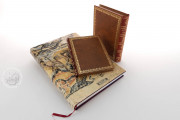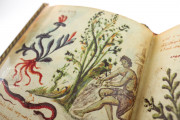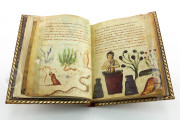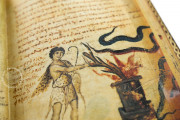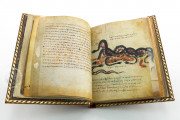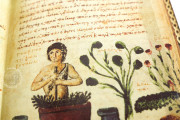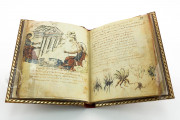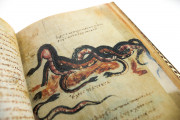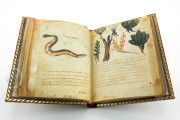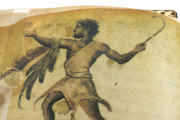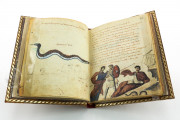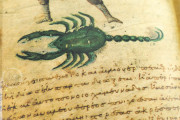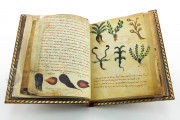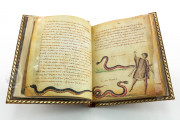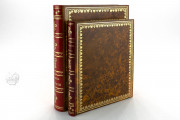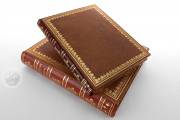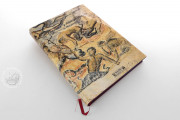The Paris Nicander is the only surviving illustrated manuscript of the work of the ancient Greek didactic poet Nicander of Colophon. It is a fragment (about a third) of a manuscript of two texts devoted to animals, plants, and minerals poisonous to humans and remedies for the harm caused by them: the Theriaca ("On Harmful Animals") and the Alexipharmaca ("On Antidotes for Poisons"). The manuscript, made in Constantinople in the second half of the tenth century, features 122 unframed illustrations of animals, plants, and humans that reinforce and amplify the teachings of the Greek text.
Nicander of Colophon composed his instructional poems in the second century BCE, relying mainly on the work of Apollodorus of Alexandria, who wrote a century earlier. The Theriaca focuses on poisons from the bites and stings of snakes, spiders, scorpions, lizards, and fish (fols. 1-28), while the Alexipharmaca addresses poisons of plant, animal, and mineral origin (fols. 29-46).
Greek Pharmacology
Commonly combined, Nicander's two pharmacological texts discuss a variety of poisons and their antidotes in hexameter verse, which helps the reader remember the content. In addition to describing the composition of the poisons and their symptoms, the texts also helpfully detail remedies for each. Since the writer was no physician, his descriptions sometimes reflect inherited superstitions, and the exigencies of the verse form occasioned the introduction of murky terminology.
Botanical and Zoological Illustrations
The illustrations are mostly placed "in text" (near the text they elucidate) at the pages' top, middle, or bottom. Not all planned illustrations were executed, and there are blank spaces where they were envisioned (especially on fols. 32-43). The animals are rather generic in appearance, but plants are presented in more detail, with a clear indication of their root structures.
The human figures are painted with great care and attention to detail. The first image shows Orion, the ancient huntsman famously chased by a scorpion. Orion is all dynamic action, while the scorpion is surprisingly static (fol. 2v). The manuscript closes with three full-page images that move from the birth of serpents from primordial Titans to a seemingly untroubled shepherd strolling in a forest (fols. 47r-48r).
Whether these images faithfully copy models handed down through the generations is unclear. There is, however, evidence that images were essential to the transmission of Nicander's texts: the third-century Christian theologian Tertullian reports that Nicander both wrote about and depicted scorpions.
Borrowed by a Renaissance Classicist
The manuscript was in the collection of the Vatican Library in the fifteenth century, when it was borrowed by Ermolao Barbaro (1454-1493), an authority on classical Greek texts. The manuscript was acquired by the abbey of Saint-Germain-des-Près in the eighteenth century. It was in the French royal library by the reign of Charles X (1757-1836), when it received its current binding. It was transferred to the Bibliothèque nationale (now the Bibliothèque nationale de France) during the French Revolution.
We have 1 facsimile edition of the manuscript "Paris Nicander": Theriaka y Alexipharmaka de Nicandro facsimile edition, published by M. Moleiro Editor, 1997
Request Info / Price


